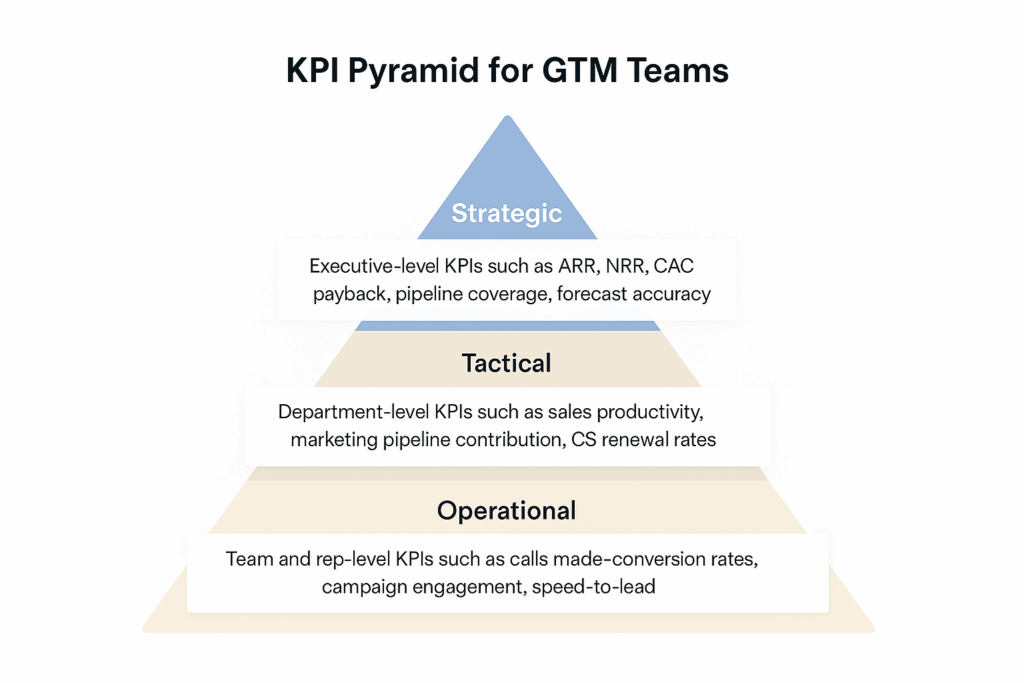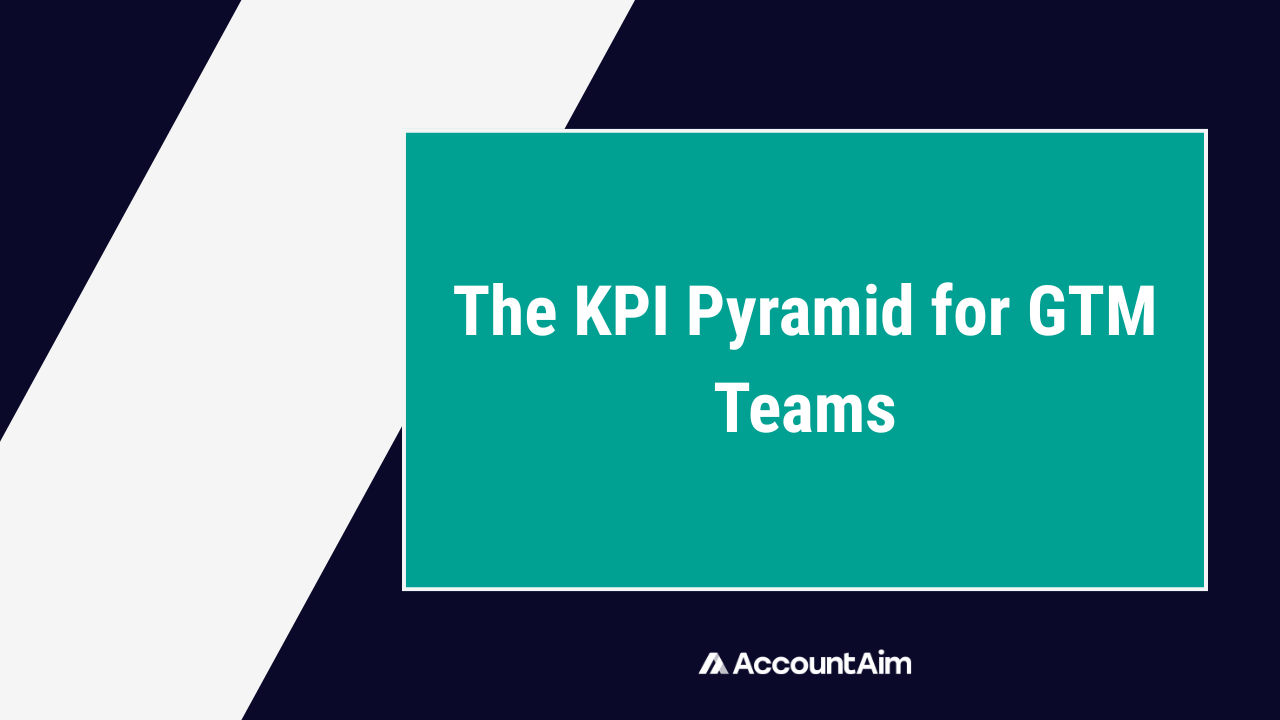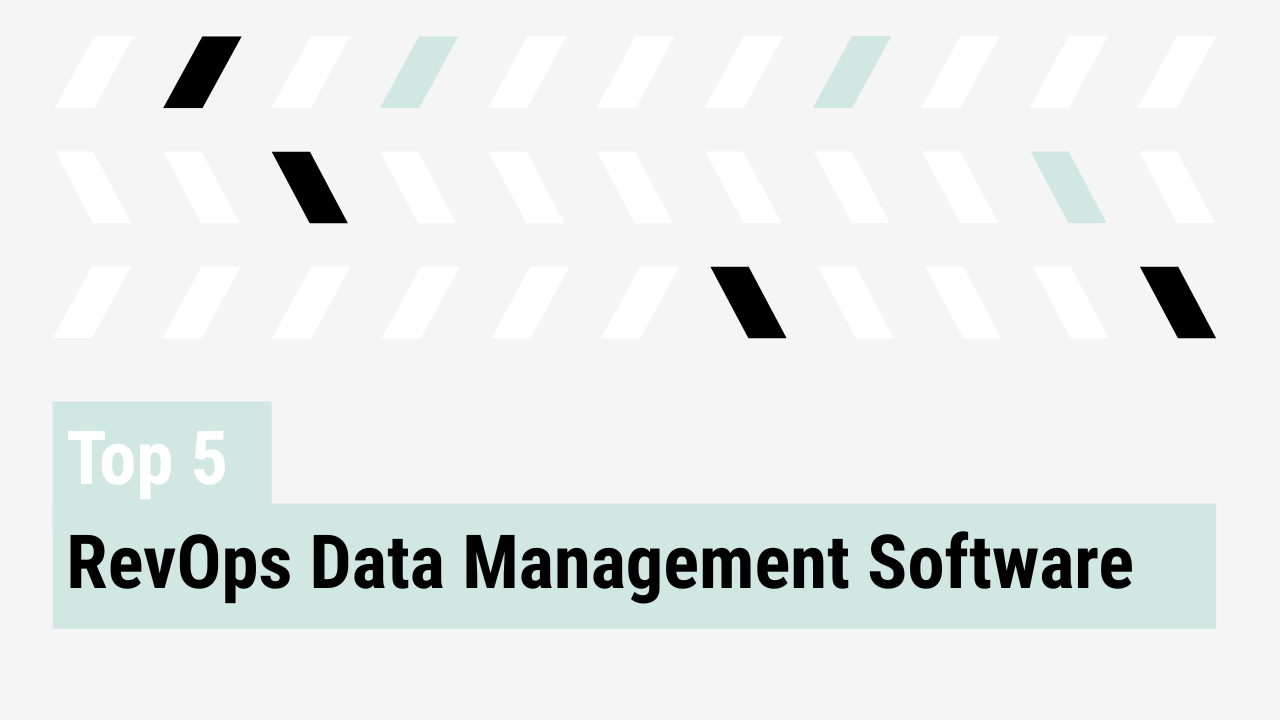Revenue leaders are surrounded by data. Conversion rates, pipeline coverage, renewal percentages, activity counts. The list goes on. But when metrics don’t ladder up, the C-suite sees noise instead of clarity.
The KPI pyramid solves this problem. By layering operational, tactical, and strategic metrics, it connects day-to-day execution with the outcomes that matter to executives.
Why GTM teams need a KPI pyramid
Misaligned KPIs create friction across sales, marketing, and customer success. Marketing may chase MQL volume, sales may focus on closed deals, and CS may zero in on churn. Each team feels productive, yet leadership still wonders: are we growing efficiently and predictably?
The KPI pyramid provides alignment. It shows how frontline activity translates into departmental results, and how those results drive company performance.
The structure of the KPI pyramid
The pyramid has three layers:
- Strategic (top): Executive KPIs such as ARR, NRR, CAC payback, pipeline coverage, forecast accuracy
- Tactical (middle): Department KPIs such as sales productivity, marketing pipeline contribution, CS renewal rates
- Operational (base): Execution metrics such as calls made, lead response time, campaign engagement, deal stage conversions
Each operational KPI should support a tactical measure, and each tactical KPI should tie back to a strategic outcome. Metrics without this connection don’t belong in the pyramid.
Applying the pyramid to GTM domains
The pyramid becomes actionable when applied to GTM pillars:
- Pipeline generation: Daily SDR activity such as calls and emails creates opportunities, which in turn drive opportunity creation rates and ultimately determine whether the business maintains healthy pipeline coverage.
- Pipeline management: AE conversion rates at each stage show how effectively deals move forward, which influences overall pipeline velocity and feeds directly into forecast accuracy.
- Customer success: The speed at which support tickets are resolved improves customer health scores, and those scores become leading indicators of net revenue retention (NRR).

This structure lets leaders trace the line from daily activity to board-level results.
Best practices for building your KPI pyramid
Start at the top by anchoring on executive goals before cascading down. Stay disciplined and limit each layer to a handful of essential KPIs. Build on clean data, because without consistency the pyramid collapses. Refresh quarterly so metrics evolve with strategy. Finally, make it visible by using dashboards to show how metrics roll upward.
Using the KPI pyramid for GTM teams
The KPI pyramid is a way for RevOps and GTM leaders to prove their work drives the outcomes the C-suite values most.
Audit your metrics. Map them into the pyramid. Share it across teams. When daily actions clearly connect to executive priorities, alignment becomes the operating model.



